Picture Day Friday
In the category Best Wedding Day Dress EVUH...
Anne of the Arlington Heights Memorial Library designed a dress made from romance novels. Courtesy of The Frisky.
In the category Best Wedding Day Dress EVUH...
Anne of the Arlington Heights Memorial Library designed a dress made from romance novels. Courtesy of The Frisky.
Write back:
0
comments
Posted on:
4/30/2010 12:53:00 AM
![]()
Labels: Humor
Copyright 2006–2023 Keira Soleore (keirasoleore.blogspot.com)




Write back:
0
comments
Posted on:
4/29/2010 01:47:00 PM
![]()
Labels: Business: Authors, Business: BlogPrize, Business: BlogTour, Business: CrossPromo
Copyright 2006–2023 Keira Soleore (keirasoleore.blogspot.com)
I was astounded when I came across the title to this paper that ties Jane Austen, a contemporary romance novelist of her times, with Game Theory. I would never have put those two, in my mind, mutually exclusive facets of academia in the same sentence together, much less in anything that inextricably connects the two.
Game Theory is a branch of applied mathematics used, most notably by economists and political science theorists, to capture behavior in strategic situations, in which an individual's success in making choices depends on the choices of others. Initially developed to analyze competitions in which one individual does better at another's expense (zero sum games), the application of the theory is to find equilibria in these games.
Associate professor at UCLA, Michael Chwe, gave a talk on April 23, 2010 on how Jane Austen used the principles of strategic thinking in her novels long before Game Theory was developed. Here's the abstract of his talk:
'People have analyzed strategic thinking long before the academic field of game theory started in the 1950s. I argue that Jane Austen's six novels, among the most widely beloved in the English language, can be understood as a systematic analysis of strategic thinking. Austen's novels do not simply provide interesting "case material" for the game theorist to analyze, but are themselves very ambitious and wide-ranging theoretically, providing insights not yet superseded by modern social science. Austen prizes individual choice and argues that social norms against "selfishness" can simply be a way to control women. Like a rational choice theorist, Austen lauds stable, complete preferences but also examines how they can change according to the social context. People who are good at strategic thinking have "penetration" and succeed by understanding the preferences and choices of others. Austen thoughtfully considers competing models of human action, including those based on emotion, instinct, habit, rules, and social embeddedness, but consistently favors rational choice. Austen carefully distinguishes strategic thinking from concepts often confused with it, such as selfishness, economistic values, and competition. Far from assuming that strategic thinking assumes atomistic individuality, for Austen strategic partnership is the surest foundation for intimacy and marriage. Austen critically looks at how strategic thinking, usually so useful, can itself have disadvantages, and also why high-status people are often clueless about the strategicness of lower-status people.'
Pretty zany, eh?
Write back:
2
comments
Posted on:
4/29/2010 12:42:00 AM
![]()
Labels: Academia
Copyright 2006–2023 Keira Soleore (keirasoleore.blogspot.com)
 The Romance Writers of America have updated their 2010 Conference website with the following information:
The Romance Writers of America have updated their 2010 Conference website with the following information:
1. Schedule of events.
2. Detailed alphabetical list of Workshops with handouts for most of them.
3. List of Publishers attending the conference.
4. List of Editors taking appointments and their interest grid.
5. List of Agents taking appointments and their interest grid. 
To commemorate the 30th anniversary of the first National Conference, RWA is hosting a special RITA and Golden Heart Awards Dinner prior to the Awards ceremony.
Write back:
0
comments
Posted on:
4/28/2010 08:10:00 PM
![]()
Labels: Business: RWA Con '10
Copyright 2006–2023 Keira Soleore (keirasoleore.blogspot.com)
 Since I didn't hear back from the winners from last week, the new winner for both the books is...PJ. Please email your address to me.
Since I didn't hear back from the winners from last week, the new winner for both the books is...PJ. Please email your address to me.
Write back:
1 comments
Posted on:
4/27/2010 12:01:00 AM
![]()
Labels: Business: Authors, Business: BlogPrize, Business: CrossPromo
Copyright 2006–2023 Keira Soleore (keirasoleore.blogspot.com)
Today, Esi Sogah blogged about a trip down memory lane into her reading and love of reading as a child. My reply on her blog was so long, I thought I'd pop it on here to share with you.
 Esi has a picture of the first Betsy-Tacy book on her post. What a conincidence that because of a recommendation from Ammanda McCabe, I have the same Betsy-Tacy book waiting for pick-up at the library for my daughter. I'm so excited for her to start reading it.
Esi has a picture of the first Betsy-Tacy book on her post. What a conincidence that because of a recommendation from Ammanda McCabe, I have the same Betsy-Tacy book waiting for pick-up at the library for my daughter. I'm so excited for her to start reading it.

 Thanks to my daughter, I've the read the following chapter book series: Junie B. Jones, Amanda Pig, Magic Treehouse, Fairy series, Princess Ellie, and Arthur. Dr. Seuss was instrumental in getting her interested in reading, and the Junie B. Jones character by Barbara Park for chapter books.
Thanks to my daughter, I've the read the following chapter book series: Junie B. Jones, Amanda Pig, Magic Treehouse, Fairy series, Princess Ellie, and Arthur. Dr. Seuss was instrumental in getting her interested in reading, and the Junie B. Jones character by Barbara Park for chapter books.
My childhood reading was in two distinct parts: books I loved and books I was forced to read.
In the first category were: Enid Blyton (love, love, LOVE), Nancy Drew, Hardy Boys, lots of European boarding school books in translation, folk stories in translation, the original science fiction, Russian science fiction in translation, Georgette Heyer, category romance novels (sneaked between covers of textbooks), mysteries, Romantic poets, and daily newspapers.
In the second category were The Classics. This second category is the one that was a surprising discovery. Some were god-awful-borrrring, but there were delightful, engrossing, vocabulary-expanding ones, too. My favorites ones I read in all formats, from easy reading versions to fully unabridged ginormous tomes: Jules Verne, Alexandre Dumas, Jane Austen, and Alcott; the worst were the tumescent Russians (bitch, moan, groan). As I mentioned to Esi, The Force To Read was a maternal one, not of a scholastic (from school) nature.
What were your favorites books as a child? Was there a summer holiday required reading list for you when you were a child? Or were you allowed to visit the library and withdraw any book you wanted so long as you brought a book home and read it?
* * *
Open Letter to Children's Book Publishers:
Due to budget constraints, lack of trained professionals, and myriad perfectly valid reasons I'm not aware of, copyediting and proofreading of books is getting short shrift from the publishing industry these days. With adult books, it's can be an annoyance, but it's a livable issue.
Where children's books are concerned, it's a serious problem. Children are absorbing rules of grammar, writing styles, and word usage from everything they read. Poorly punctuated sentences that are causing even the very young readers to stumble as they read aloud are an atrocity.
It behooves publishers to pay good money for experienced editors for every children's book they publish. While a publisher is not a charity organization, educating our young is like a paying-it-forward public service.
Thank you for your attention in this matter.
Write back:
0
comments
Posted on:
4/26/2010 03:43:00 PM
![]()
Labels: Leisure: Reading
Copyright 2006–2023 Keira Soleore (keirasoleore.blogspot.com)
 I'm still waiting to hear back from the winners of the JoBev Giveaway. You have until EOD Monday, April 26 to get back to me, or I'm afraid I'll have to choose a different name out of the hat.
I'm still waiting to hear back from the winners of the JoBev Giveaway. You have until EOD Monday, April 26 to get back to me, or I'm afraid I'll have to choose a different name out of the hat.
beckwith49
and
Ingrid
Please e-mail your names and addresses to keira (at) keirasoleore (dot) com.
Write back:
0
comments
Posted on:
4/23/2010 05:50:00 PM
![]()
Labels: Business: Authors, Business: BlogPrize, Business: CrossPromo
Copyright 2006–2023 Keira Soleore (keirasoleore.blogspot.com)
Write back:
6
comments
Posted on:
4/23/2010 12:20:00 AM
![]()
Labels: Research: FineArts, Research: Renaissance
Copyright 2006–2023 Keira Soleore (keirasoleore.blogspot.com)
 Thank you all for reading and commenting on the blog yesterday on all things bookish about Jo Beverley.
Thank you all for reading and commenting on the blog yesterday on all things bookish about Jo Beverley.
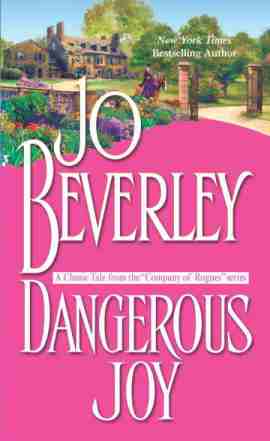 The copy of Dangerous Joy from the Rogue series goes to...
The copy of Dangerous Joy from the Rogue series goes to...
beckwith49
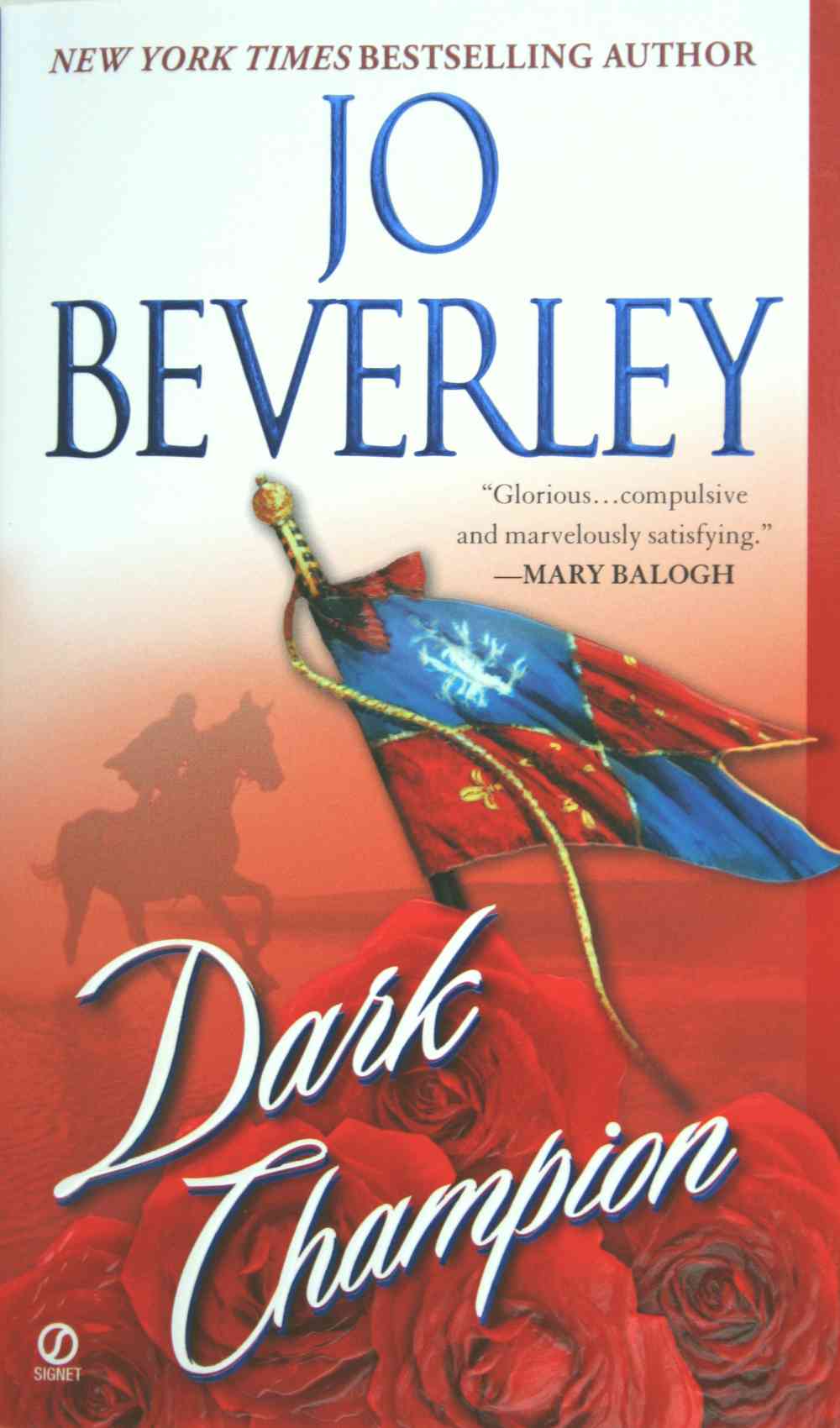 Commenter and friend Janet Webb, aka @JanetNorCal, in great generosity offered up a used copy of the medieval Dark Champion. The winner of this book is...
Commenter and friend Janet Webb, aka @JanetNorCal, in great generosity offered up a used copy of the medieval Dark Champion. The winner of this book is...
Ingrid
Please e-mail your names and addresses to keira (at) keirasoleore (dot) com.
Write back:
0
comments
Posted on:
4/20/2010 01:04:00 PM
![]()
Labels: Business: Authors, Business: BlogPrize, Business: CrossPromo
Copyright 2006–2023 Keira Soleore (keirasoleore.blogspot.com)
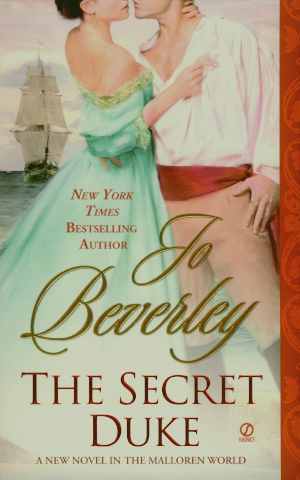 In honor of Jo Beverley's The Secret Duke (April 2010) hitting #16 on the New York Times bestseller list, here's a post on all things bookish about Jo Beverley.
In honor of Jo Beverley's The Secret Duke (April 2010) hitting #16 on the New York Times bestseller list, here's a post on all things bookish about Jo Beverley.
I'm also giving away a copy of DANGEROUS JOY by Jo Beverley to a blog commenter, to be chosen by El Randomizer. The contest goes until Mon 4/19 11:59 PM U.S. Pacific Time.
 I was introduced to five-time RITA winner Jo Beverley's books by Janga. Janga has introduced me to authors and books that are now on my list of keepers, and as a result, when she recommends I listen. Upon her advice, my first JoBev was Devilish. Goodness! Gracious! I couldn't believe what my eyes were seeing: the prose, the phrasing, the people, and above all, the emotions. I was in astonished awe throughout the book.
I was introduced to five-time RITA winner Jo Beverley's books by Janga. Janga has introduced me to authors and books that are now on my list of keepers, and as a result, when she recommends I listen. Upon her advice, my first JoBev was Devilish. Goodness! Gracious! I couldn't believe what my eyes were seeing: the prose, the phrasing, the people, and above all, the emotions. I was in astonished awe throughout the book.
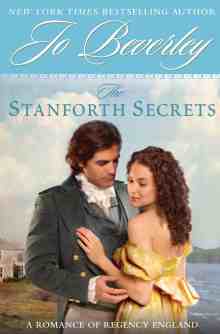
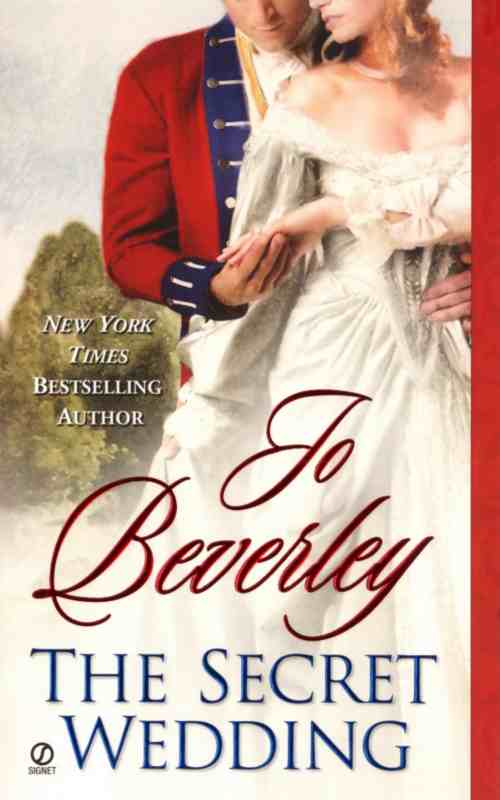 These past three weeks, I've been immersed in the same awe as I re-read, and continue to do so, Beverley's backlist: all the books I own, those that I can buy new or used online, and those that I can borrow through the public library system. So far, I've made it through all the medievals (so so so good), almost all the Mallorens, about half the Rogues, and a mere two of the Regencies (woe, indeed!). (I'm awaiting the clearing of the skies over Britain from the volcano fall-out before ordering Bryght's book.)
These past three weeks, I've been immersed in the same awe as I re-read, and continue to do so, Beverley's backlist: all the books I own, those that I can buy new or used online, and those that I can borrow through the public library system. So far, I've made it through all the medievals (so so so good), almost all the Mallorens, about half the Rogues, and a mere two of the Regencies (woe, indeed!). (I'm awaiting the clearing of the skies over Britain from the volcano fall-out before ordering Bryght's book.)
Every time I read a book, I think that this is The One, the most favored. Then the next one comes along and the next. All four of her medievals fall in my favorite medievals group and also favorite books of all time. In fact, I could list every Rogue and Malloren book here, and the list heading of clear favorites would be accurate. I own most of Beverley's backlist, and they're all keepers.
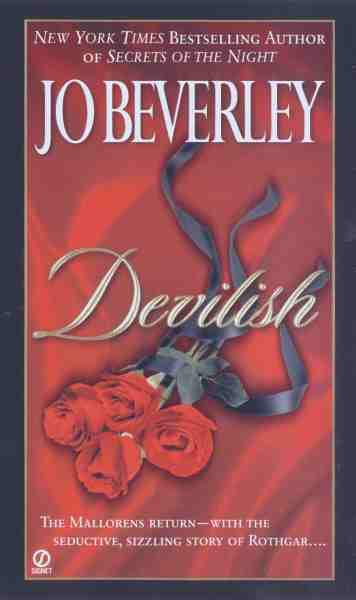 Devilish with Bey Malloren of Rothgar and Diana Westmount of Arradale — Rothgar fascinates. From the first Malloren book My Lady Notorious (the series were published out of order of occurring events), he's the power behind the scenes, the force that makes the entire series irrestible. Even in The Secret Duke, the most recent, and marginally related Malloren story, he pulls attention in every scene he's in. That JoBev could give him a woman like Diana is indicative of her writing chops, because truly anyone else would've been too mealymouthed to work for him, or even against him, for them to have an equitable life.
Devilish with Bey Malloren of Rothgar and Diana Westmount of Arradale — Rothgar fascinates. From the first Malloren book My Lady Notorious (the series were published out of order of occurring events), he's the power behind the scenes, the force that makes the entire series irrestible. Even in The Secret Duke, the most recent, and marginally related Malloren story, he pulls attention in every scene he's in. That JoBev could give him a woman like Diana is indicative of her writing chops, because truly anyone else would've been too mealymouthed to work for him, or even against him, for them to have an equitable life.
After seeing my current JoBev spate of reading, my husband asked to try one of her books, so I gave him Devilish. Before this, he'd read two romances and Sarah Wendell and Candy Tan's Beyond Heaving Bosoms on my instigation, so asking to read a rom-nov was a major step. He's half-way through it now and his comment: "After just the first chapter, you know that you're in the hands of a masterful storyteller."
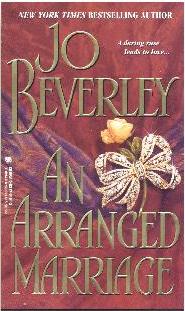 An Arranged Marriage with Nicholas Delaney and Eleanor Chivenham — What a beginning. And by the gods, what a middle. You'd think that these two had the least chance of achieving a HEA. But merely through the strength of their characters, they survive impossible odds to achieve it. And for these two it truly felt like an achievement. For some couples, it feels like eventuality. These two fought hard for themselves and for each other.
An Arranged Marriage with Nicholas Delaney and Eleanor Chivenham — What a beginning. And by the gods, what a middle. You'd think that these two had the least chance of achieving a HEA. But merely through the strength of their characters, they survive impossible odds to achieve it. And for these two it truly felt like an achievement. For some couples, it feels like eventuality. These two fought hard for themselves and for each other.
 Secrets of the Night with Brand Malloren and Rosamunde Overton — Brand is my favorite Malloren. His book's also the most wrenching of them all. This is the book where the two acknowledge their love early on, and yet, are torn by circumstances to live apart for months in limbo.
Secrets of the Night with Brand Malloren and Rosamunde Overton — Brand is my favorite Malloren. His book's also the most wrenching of them all. This is the book where the two acknowledge their love early on, and yet, are torn by circumstances to live apart for months in limbo.
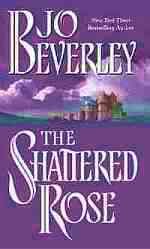 The Shattered Rose with Galeran and Jehanne of Heywood — The most painful of her medievals, it's also a bold one, because the story isn't of first love. This was a couple, who'd been separated, went through immeasurable suffering, and now are carving out a second chance for themselves, because in the midst of all the turmoil, what's not lost is the love they bear each other. The addition of a first-time young love between secondary characters is another bold risk. It pays off, because it lightens and contrasts with the tale of angst between the protagnoists.
The Shattered Rose with Galeran and Jehanne of Heywood — The most painful of her medievals, it's also a bold one, because the story isn't of first love. This was a couple, who'd been separated, went through immeasurable suffering, and now are carving out a second chance for themselves, because in the midst of all the turmoil, what's not lost is the love they bear each other. The addition of a first-time young love between secondary characters is another bold risk. It pays off, because it lightens and contrasts with the tale of angst between the protagnoists.
 Dark Champion with FitzRoger of Cleeve and Imogen of Carrisford — One of the most formidable of Beverley's medieval heroes, he feels like the precursor to Rothgar. Progressive for his times and confident in his abilities and position in society, he's willing to grant rights to the heroine in 1101 that most men wouldn't even in 1901.
Dark Champion with FitzRoger of Cleeve and Imogen of Carrisford — One of the most formidable of Beverley's medieval heroes, he feels like the precursor to Rothgar. Progressive for his times and confident in his abilities and position in society, he's willing to grant rights to the heroine in 1101 that most men wouldn't even in 1901.
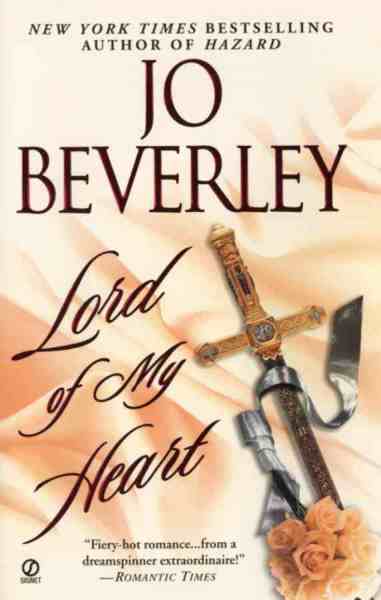 Lord of my Heart with Aimery de Gaillard and Madeleine of Baddersley — The story could be said to hinge on a misunderstanding, but with a JoBev, it's rarely ever such a thin plot device. The socio-political reasons are layered on in more and more complexity until the readers' allegiance moves back-n-forth between the protagonists.
Lord of my Heart with Aimery de Gaillard and Madeleine of Baddersley — The story could be said to hinge on a misunderstanding, but with a JoBev, it's rarely ever such a thin plot device. The socio-political reasons are layered on in more and more complexity until the readers' allegiance moves back-n-forth between the protagonists.
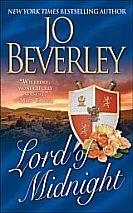 Lord of Midnight with Renald de Lisle and Claire of Summerbourne — Another story with an impossible beginning. How would Claire reconcile herself to Renald's past since it bears such awful consequences for her? And here's the master stroke of accurate historical knowledge of the stakes at play in a Norman England post-conquest: political, religious, social, economic. That is what makes the story hang together and allows the two characters to heal and hove in to each other.
Lord of Midnight with Renald de Lisle and Claire of Summerbourne — Another story with an impossible beginning. How would Claire reconcile herself to Renald's past since it bears such awful consequences for her? And here's the master stroke of accurate historical knowledge of the stakes at play in a Norman England post-conquest: political, religious, social, economic. That is what makes the story hang together and allows the two characters to heal and hove in to each other.
If I had to make a statement about a common thread running through Beverley's works, it would be that life forces impossible choices upon people, but those who adapt, learn, and endure come out forged into better, stronger people. Character is everything... and everything is possible.
To read more about Jo Beverley and her books, visit her website or Wikipedia.
Have you read any of JoBev's books? If not, are you tempted to give one a try now? If you're already a fan, which one(s) is/are your favorites?
Please comment by Mon 11:59 PM US PT to win a copy of DANGEROUS JOY.
Write back:
26
comments
Posted on:
4/18/2010 05:25:00 PM
![]()
Labels: Business: Authors, Business: BlogPrize, Business: CrossPromo, Leisure: Reading
Copyright 2006–2023 Keira Soleore (keirasoleore.blogspot.com)

(Click on the image to see a bigger sized version.)
The origins of The Collins Hours or the Book of Hours for Rome is probably Bruges, Belgium in 1445—1450. The image below is of the original housed at the Philadelphia Museum of Art as a gift of Mrs. Philip S. Collins in memory of her husband. 1945-65- 4, fols. 73v-74
In the above illustration of the Nativity for the hour of Prime (about 6 a.m.), the Christ Child, the Virgin Mary, Joseph, and a handmaiden are pictured in a well-designed stable. The border surrounding the miniature is occupied by adoring shepherds. The artist, the Master of the Collins Hours, is named after his work in this manuscript. His illumination combines French and Flemish styles and shows great ingenuity.
Write back:
0
comments
Posted on:
4/16/2010 12:36:00 AM
![]()
Labels: Research: Books, Research: LateMiddleAges
Copyright 2006–2023 Keira Soleore (keirasoleore.blogspot.com)
 A dedicated reader always needs a poster opportunity for inspiring others to do the same. A dedicated father who's inculcates reading in his child deserves far more accolades. Here's the New York Times's full article.
A dedicated reader always needs a poster opportunity for inspiring others to do the same. A dedicated father who's inculcates reading in his child deserves far more accolades. Here's the New York Times's full article.
 Jim Brozina, single father of two daughters and an elementary school librarian, proposed The Streak to his younger daughter Kristen: Read together for 100 straight bedtimes without missing once. "Our rule was," said Brozina, "we had to read before midnight, and it had to be at least 10 minutes."
Jim Brozina, single father of two daughters and an elementary school librarian, proposed The Streak to his younger daughter Kristen: Read together for 100 straight bedtimes without missing once. "Our rule was," said Brozina, "we had to read before midnight, and it had to be at least 10 minutes."
Such a simple objective, such a difficult follow-through for most. And yet, this duo succeeded. They then expanded The Streak to 1000 nights. "And then we got to 1,000, and we said, ‘How can we stop?’" recalls Brozina.
For 3218 nights (and a few mornings where nights were unavoidably missed), via telephone, in theater rehearsal breaks, and returning early from dates, this father and daughter kept the faith and the committment in this enjoyable relationship that they had with each other and the books.
"It was just the two of us," Kristen said. "The Streak was stability when everything else was unstable. It was something I knew would always be there."
 NYT says, "From James Marshall's picture books about hippos to middle-school classics like When Zachary Beaver Came to Town to the 14 Oz books, to Harry Potter, Agatha Christie, Dickens, and Shakespeare, they read continuously from when Kristen hit fourth grade until her first day of college. The Streak ended as it began, with L. Frank Baum and the first chapter of his The Wonderful Wizard of Oz.
NYT says, "From James Marshall's picture books about hippos to middle-school classics like When Zachary Beaver Came to Town to the 14 Oz books, to Harry Potter, Agatha Christie, Dickens, and Shakespeare, they read continuously from when Kristen hit fourth grade until her first day of college. The Streak ended as it began, with L. Frank Baum and the first chapter of his The Wonderful Wizard of Oz.
 At 61, Brozina's part of a generation that held reading as an almost magical ticket to upward mobility. "I don’t have much money to pass on," he said. "But these books, she’ll read to hers and they’ll read to theirs. And they’ll read to the generations down the lines. It’s a means for me to touch generations I’ll never see. They’ll all be smart."
At 61, Brozina's part of a generation that held reading as an almost magical ticket to upward mobility. "I don’t have much money to pass on," he said. "But these books, she’ll read to hers and they’ll read to theirs. And they’ll read to the generations down the lines. It’s a means for me to touch generations I’ll never see. They’ll all be smart."
And this ultimately makes the best case for reading I've ever seen. Bravo, Mr. Brozina.
Write back:
6
comments
Posted on:
4/14/2010 01:14:00 AM
![]()
Labels: Leisure: Reading
Copyright 2006–2023 Keira Soleore (keirasoleore.blogspot.com)
 The 2010 Spring Dewey's 24-Hour Read-a-thon was this past weekend. For 24 hours, participants read books, posted to their blogs about their reading, visited other readers’ blogs, and participated in mini-challenges throughout the day. This event happens twice a year, in April and in October. I've never done it before; only heard about it after it was over. However, I'm looking forward to being a part of this fun event in October.
The 2010 Spring Dewey's 24-Hour Read-a-thon was this past weekend. For 24 hours, participants read books, posted to their blogs about their reading, visited other readers’ blogs, and participated in mini-challenges throughout the day. This event happens twice a year, in April and in October. I've never done it before; only heard about it after it was over. However, I'm looking forward to being a part of this fun event in October.

 In October 2007, Dewey from The Hidden Side of a Leaf (her blog has since been taken down) was inspired by the 24-Hour Comics Day and started the 24 Hour Read-a-Thon. That October 37 people took part. June '08 saw 69 people, and the following October, there were 119 participants. Dewey passed away the same year, but Hannah (WordLily), Ana (Nymeth), and Trish (Hey Lady) decided to continue the tradition. The event's been steadily gaining readers. Now there are French and German versions, too.
In October 2007, Dewey from The Hidden Side of a Leaf (her blog has since been taken down) was inspired by the 24-Hour Comics Day and started the 24 Hour Read-a-Thon. That October 37 people took part. June '08 saw 69 people, and the following October, there were 119 participants. Dewey passed away the same year, but Hannah (WordLily), Ana (Nymeth), and Trish (Hey Lady) decided to continue the tradition. The event's been steadily gaining readers. Now there are French and German versions, too.
Would this be of interest to you? Or would an event like this take the fun out of reading for you?
Write back:
0
comments
Posted on:
4/13/2010 12:29:00 AM
![]()
Labels: Leisure: Reading
Copyright 2006–2023 Keira Soleore (keirasoleore.blogspot.com)
 I started out this blog as a brief overview of a well-maintained, seventeenth century hunting lodge in Oxfordshire, now turned into a National Trust site: Ashdown House.
I started out this blog as a brief overview of a well-maintained, seventeenth century hunting lodge in Oxfordshire, now turned into a National Trust site: Ashdown House.
Then as I was reading the blog maintained by Nicola Cornick, who's the National Trust historian at Ashdown, I came across this gem of information: "The enormous sarsen stone a few miles away at Blowing Stone Hill is reputed to have been used by King Alfred to rally his troops for the Battle of Ashdown in 871AD."
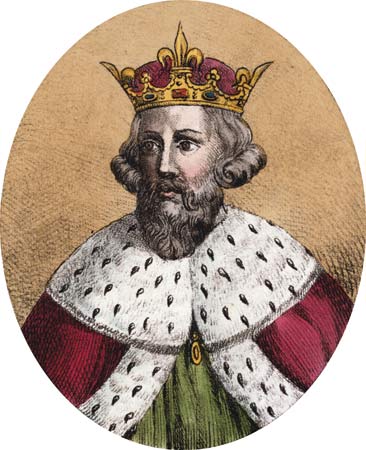 Take a beautiful old house and bring in my current object of fannish admiration Alfred (at this point, I'm on first-name, even nickname, basis), and my mind's churning with story ideas.
Take a beautiful old house and bring in my current object of fannish admiration Alfred (at this point, I'm on first-name, even nickname, basis), and my mind's churning with story ideas.
 Anyway, back to Ashdown, or Æscesdūn as it was called in Anglo-Saxon, and why I wanted to blog about it. A house built in the 1660s during the Stuart/Restoration Period, in admiration of a woman, a queen, who never lived in it, is now restored and leased to folks who continue in the restoration efforts is highly intriguing. Add in graceful, imaginative architecture, a proper starchy butler and housekeeper wife on site, and meeting historican Cornick in person, you can see my fascination with the place.
Anyway, back to Ashdown, or Æscesdūn as it was called in Anglo-Saxon, and why I wanted to blog about it. A house built in the 1660s during the Stuart/Restoration Period, in admiration of a woman, a queen, who never lived in it, is now restored and leased to folks who continue in the restoration efforts is highly intriguing. Add in graceful, imaginative architecture, a proper starchy butler and housekeeper wife on site, and meeting historican Cornick in person, you can see my fascination with the place.
 Located three miles north of the village of Lambourn and a 20-minute drive from Swindon, Ashdown House, also known as Ashland Park, is situated high among the wind-swept, rolling Berkshire Downs in the civil parish of Ashbury of Oxfordshire county.
Located three miles north of the village of Lambourn and a 20-minute drive from Swindon, Ashdown House, also known as Ashland Park, is situated high among the wind-swept, rolling Berkshire Downs in the civil parish of Ashbury of Oxfordshire county.
 The honey and cream-colored Dutch-style building has more than 8,000 square feet of living space, but "it is surprisingly cozy and eminently liveable," according to The Times. Richard Henderson, the National Trust's property manager in Oxfordshire in 2009 declares, "It is one of the most beautiful properties we have." The entire estate is composed of two lodges, three cottages, and 100 acres of parkland.
The honey and cream-colored Dutch-style building has more than 8,000 square feet of living space, but "it is surprisingly cozy and eminently liveable," according to The Times. Richard Henderson, the National Trust's property manager in Oxfordshire in 2009 declares, "It is one of the most beautiful properties we have." The entire estate is composed of two lodges, three cottages, and 100 acres of parkland.
 The manicured parkland around the house quickly gives way to grassy fields dotted with sheep and a wandering herd of deer. It is surrounded in turn by woodland and farmland. According to Cornick, "From the Bronze Age barrows on the nearby ridge, to the Iron Age hillfort of Alfred's Castle, from the sarsen stones linked by legend to Merlin to the paths through the medieval deer park, from the weathercock on the hill to the little white "palace" at its foot, there is a timeline of thousands of years of history at Ashdown Park." To read more information about the medieval Park Pale, a bank and ditch with a wooden palisade on top to keep deer and other animals within legal hunting bounds of the estate, go here.
The manicured parkland around the house quickly gives way to grassy fields dotted with sheep and a wandering herd of deer. It is surrounded in turn by woodland and farmland. According to Cornick, "From the Bronze Age barrows on the nearby ridge, to the Iron Age hillfort of Alfred's Castle, from the sarsen stones linked by legend to Merlin to the paths through the medieval deer park, from the weathercock on the hill to the little white "palace" at its foot, there is a timeline of thousands of years of history at Ashdown Park." To read more information about the medieval Park Pale, a bank and ditch with a wooden palisade on top to keep deer and other animals within legal hunting bounds of the estate, go here.
 The house was carefully maintained by the Craven family until World War II, when it was requisitioned and occupied by the army, who left it in a derelict state by 1956. At that point, the Countess of Craven gave it to the National Trust.
The house was carefully maintained by the Craven family until World War II, when it was requisitioned and occupied by the army, who left it in a derelict state by 1956. At that point, the Countess of Craven gave it to the National Trust.
If you're interested in visiting, do so on a Wednesday or a Saturday between two and five in the afternoon from March/April through October. House tours opened on April 3 this year. Since it is tenanted, visitors are allowed on the main staircase through the house, up on the roof, and outside on the terrace, but you can see most of the rooms within.
Write back:
6
comments
Posted on:
4/12/2010 01:00:00 AM
![]()
Labels: Research: Estates
Copyright 2006–2023 Keira Soleore (keirasoleore.blogspot.com)
Photos by Tony Howell of England. (Guess which one's my favorite!)
Abutilon from Somerset

Dahlia from Cornwall

Crocosmia from Cornwall

Mimulus Monkey Musk from Somerset

Write back:
7
comments
Posted on:
4/09/2010 01:26:00 AM
![]()
Labels: Research: Horticulture
Copyright 2006–2023 Keira Soleore (keirasoleore.blogspot.com)
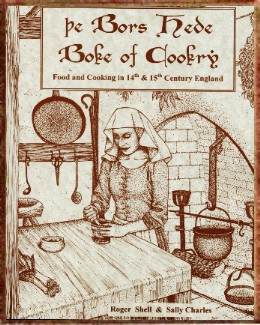 I blogged HERE about Þe Bors Hede Boke of Cookry and the recipe for Frytor of Erbys. Here's another recipe...
I blogged HERE about Þe Bors Hede Boke of Cookry and the recipe for Frytor of Erbys. Here's another recipe...
Wardonys in Syryp
Middle English
Take wardonys an caste on a potte • and boyle hem till þey ben tender • þan take hem vp and pare hem an kytte hem in to pecys • take y-now of pouder of canel a good quantyte an caste it on red wyne • an draw it þorw a straynour • caste sugre þer-to an put it in an erþen pot an let it boyle • an þanne caste þe perys þer-to an let boyle to-gederys • an whan þey haue boyle a whyle take pouder of gyngere an caste þer-to • an a lytil venegre • an a lytil safron • an loke þat it be poynaunt an dowcet
—Harleian MS. 279.10, dated 1430
Modern Translation
Take wardon pears and boil them in a pot until they are tender; then take them out and pare them, and cut them in two pieces; take a good quantity of cinnamon and mix it in red wine, and draw it through a strainer; add sugar to this and boil it in an earthen pot then add pears to this and boil together a while longer; then add powdered ginger; a little vinegar, and a little saffron; be sure it is pungent and sweet.
Working Recipe
2 cups Red Wine
1/2 cup Sugar
1 2-inc Cinnamon Stick
4 Bosc pears, firm, pared, halved, cored
1/2 tsp Ginger, ground
1 tsp Red Wine Vinegar
1 pinch Saffron, cumbled
Combine wine, sugar, and cinnamon in a medium saucepan. Bring to a boil. Add pears. Reduce heat, cover, and simmer for 15 minutes or until tender, turning occasionally. Remove pears from pan, and place in serving dish. Remove and discard cinnamon stick. Add remaining ingredients to wine mixture in pan, and bring to a boil. Serve over pears.
Write back:
0
comments
Posted on:
4/08/2010 12:21:00 AM
![]()
Labels: Research: Culinary, Research: HighMiddleAges
Copyright 2006–2023 Keira Soleore (keirasoleore.blogspot.com)
 The Wisdom of Jane Austen, edited by Shawna Mulen, deconstructs all of Austen's works to glean and collate quotes by topic. Arranged alphabetically, the topics start at Accomplishment, end with Youthful Folly, and make forays into such wide-ranging ones as, Constancy, Dashed Hopes (very separate from Depression and Despair), Freckles, Isipidness, and Lucky Guess. The book covers 326 of them in all. Here are a few examples...
The Wisdom of Jane Austen, edited by Shawna Mulen, deconstructs all of Austen's works to glean and collate quotes by topic. Arranged alphabetically, the topics start at Accomplishment, end with Youthful Folly, and make forays into such wide-ranging ones as, Constancy, Dashed Hopes (very separate from Depression and Despair), Freckles, Isipidness, and Lucky Guess. The book covers 326 of them in all. Here are a few examples...
Qualities in a Man
I could not be happy with a man whose taste did not in every point coincide with my own. He must enter into all my feelings; the same books, the same music must charm us both.
—Marianne Dashwood, "Sense & Sensibility"
Marriage and Greed
What is the difference in matrimonial affairs, between the mercenary and the prudent motive? Where does discretion end and avarice begin?
—Elizabeth Bennett, "Pride & Prejudice"
Ill Disposition
He was not an ill-disposed young man, unless to be rather cold hearted and rather selfish is to be ill-disposed.
—"Sense & Sensibility"
Doing Without Dancing
It may be possible to do without dancing entirely. Instances have been known of young people passng many, many months successively, without being at any ball of any description, and no material injury accrue to any body or mind;—but when a beginning in made—when the felicities of rapid motion have once been, though slightly, felt—it must be a very heavy set that does not ask for more.
—"Emma"
Morals
We do not look in great cities for our best morality.
—Edmund Bertram, "Mansfield Park"
Age
But seven years are, I suppose, enough to change every pore of one's skin and every feeling of one's mind.
—"Jane Austen's Letters"
The older a person grows, Harriet, the more important it is that their manners should not be bad; the more glaring and disgusting any loudness, or coarseness, or awkwardness becomes. What is passable in youth is detestable in later age.
—Emma Woodhouse, "Emma"
Write back:
0
comments
Posted on:
4/07/2010 07:10:00 PM
![]()
Labels: Craft: Critique, Leisure: Reading
Copyright 2006–2023 Keira Soleore (keirasoleore.blogspot.com)
As an aspiring writer of medieval and Regency stories, where would I want to visit on a 6-7-day tour of London in August?
YES! THE TRIP finally has some chance of happening. (omgomgomgsoexcitedomg)
Ahem, now that that's out of the way, on to practicalities.
What do I want to see that would not be an onerous burden on my long-suffering family who might possibly be with me?
Anna Campbell has added the British Museum as the first item to my list.
Another suggestion from Candice Hern was Sir John Soane's House.
The mundane is the London Eye.
A dream, that won't be possible, would be to stay at a holiday cottage on the estate of Devonshire's Chatsworth.
What places would you add to my list?
Write back:
43
comments
Posted on:
4/05/2010 10:19:00 AM
![]()
Labels: Leisure: Travel, Research: Architecture, Research: EarlyMiddleAges, Research: Regency
Copyright 2006–2023 Keira Soleore (keirasoleore.blogspot.com)
I first came to know Susan Orlean at a certificate course I was taking at the local university on nonfiction writing. No, Orlean wasn't the instructor (I'd donated my toes for that chance), but our teacher was a great fan of hers. We studied two of Orlean's New Yorker pieces.
With seven books under her belt and numerous articles for prestigious publications, such as The New Yorker, Orlean has established a reputation as one of the best writers of narrative nonfiction.
Recently, The Atlantic Wire asked Susan Orlean what she read on a daily basis. This is a series to answer this question that I've puzzled over very much lately: "How do other people deal with the torrent of information that pours down on us all? Do they have some secret? Perhaps."
Before reading Orlean's answer, bear in mind, she is married, has a young son, pets (including backyard chickens, ahem), lives in the countryside, and teaches at New York University.
Right after she wakes up, she dives into the New York Times on her iPhone. She then scans news aggregators Fluent News and Huffington Post. Her next cruise stop is Twitter where she further follows new outlets, such as @BreakingNews, specific reporters, such as @markknoller and @brianstelter, and infuential bloggers, such as @ebertchicago and @mashable. She then listens to National Public Radio during her busy family morning routine.
At this point, she takes a break for work.
At lunch, she dives into printed materials: Wall Street Journal, The Economist, The New Yorker, and 11 other magazines. She's a fast peruser. She also has a few of her favorite magazines always loaded on her iPhone so that wherever she is, she's guaranteed reading material.
Another break for work in the afternoon, then family stuff in the evenings.
Nighttime in bed is her fiction-reading time. She's a voracious (and most likely super-fast) reader.
I'm convinced she does not sleep or makes do with a short nap.
Are you amazed? I am. Most assuredly so.
Write back:
0
comments
Posted on:
4/05/2010 12:41:00 AM
![]()
Labels: Business: Authors
Copyright 2006–2023 Keira Soleore (keirasoleore.blogspot.com)
You know how some things cause your heart to thrum in excitement? Here're what does it to me...
These images of Anglo-Saxon (CE 450—1066) artifacts are courtesy of the Museum of London.





Write back:
2
comments
Posted on:
4/02/2010 12:45:00 AM
![]()
Labels: Research: EarlyMiddleAges, Research: MetalArtifacts
Copyright 2006–2023 Keira Soleore (keirasoleore.blogspot.com)